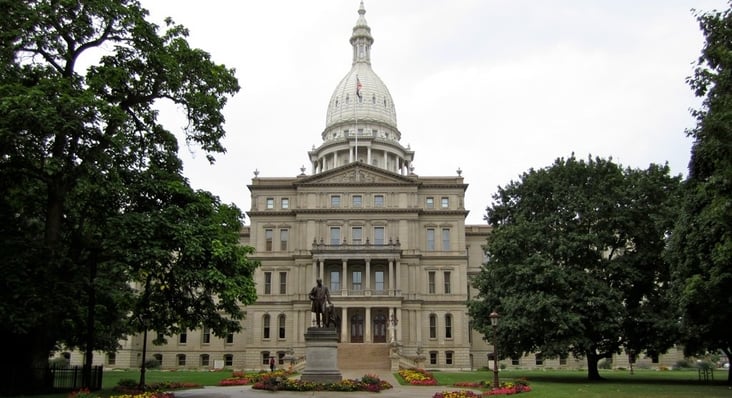
After nearly two full years debating its energy future, on Nov. 10, the Michigan Senate decisively voted in favor of Senate Bills 437 and 438, energy legislation that requires utilities to produce 15% of their electricity from renewable sources by 2021. Approved with strong bipartisan support, Michigan’s new renewable portfolio standard (RPS) will replace the state’s existing requirement of 10%, which was reached by 2015, as required. Retaining and expanding the state’s RPS, which will now be coupled with a utility Integrated Resource Planning process, is a major victory for Michigan’s advanced energy industry, given that earlier versions of the bills would have eliminated the state’s RPS altogether. Same with the state’s Energy Optimization Standard, which also had been on the chopping block but now will be preserved, under a new name.
Under Michigan’s 10% percent RPS – enacted in 2008 under Public Act 295 (PA 295) – the state has developed over 1,668 MW of new renewable energy capacity and attracted $2.9 billion in renewable energy investments. Passing Michigan’s upper chamber by votes of 26-10 and 26-11, respectively, Senate Bills 437 and 438 require utilities to meet an interim standard of 12.5% renewable energy by 2019 to ensure that they hit the 15% target by the end of 2021.
However, the bills failed to retain a provision in PA 295 known as the 50-50 rule, which barred utilities from owning more than 50% of the renewable energy built to comply with the RPS. This threatens to shut the Michigan market to independent power producers, limiting competition and resulting in higher costs for ratepayers. Advanced Energy Economy (AEE) and our state partner, the Michigan Energy Innovation Business Council (Michigan EIBC), will continue to push for greater market access as the House begins its review of the legislation later this month.
The new legislative package also keeps in place through 2021 the state’s successful Energy Optimization Standard, now recast as an Energy Waste Reduction Program. This was also a departure from earlier versions of the legislation, which called for phasing out the EOS by 2017. According to the Michigan Public Service Commission, EOS expenditures of $1.1 billion from 2010 to 2014 are estimated to achieve $4.2 billion in lifetime savings for Michigan customers – nearly $4 for every $1 invested.
The legislation still misses the mark on demand response (DR), leaving untapped Michigan’s significant potential for reducing electricity consumption during periods of peak demand. AEE and Michigan EIBC will push the House to include DR in the energy package to help the state unleash its market potential.
The legislation does include a voluntary “green pricing” program provision, which will allow companies to purchase additional renewable energy through their utility providers. This language will attract more private investment to Michigan and spur economic development, an increasing number of companies are seeking renewable energy to power their operations, either through onsite generation or contracts with third party power providers.
When the House initiates its review of Senate Bills 437 and 438 at the end of November, AEE and Michigan EIBC will work for improvements to ensure that these new policies spur additional advanced energy deployment and advanced energy companies get the chance to compete in the Michigan marketplace.
Get much more information on energy legislation in all fifty states by using PowerSuite, AEE's all-in-one tool for energy policy information.
